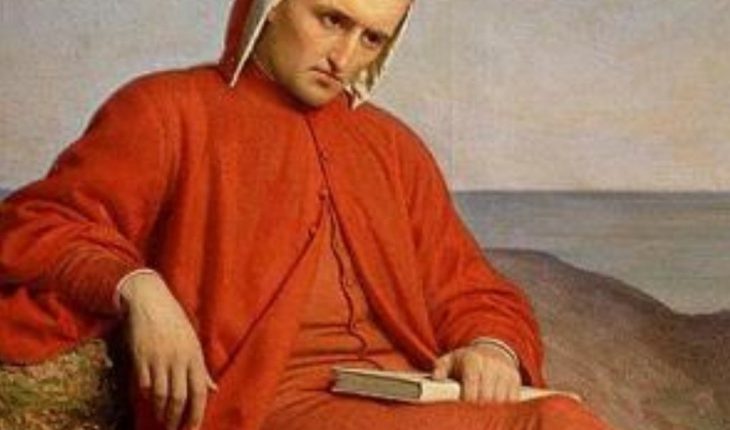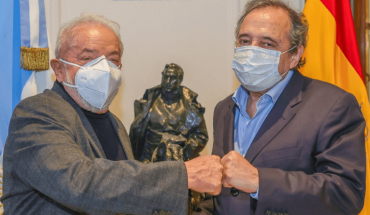No one knows exactly what date Dante Alighieri was born, but it is estimated that it was around 1265 in the city of Florence, Italy. However, that is an irrelevant fact for the transcendence that his work gained in life. Because the writer, poet and revolutionary, was baptized among other things as the father of the Italian language.
Alighieri was imprinted in the social imaginary as the author of one of the books with the greatest impact on literature of all time, The Divine Comedy; a philosophical reflection of the human essence that transits the different states. During his lifetime, Dante actively participated in the political struggles of his time, so he was banished from his hometown, and was an active advocate of Italian unity. In 1311 he wrote a treatise where he extensively overturned all his political ideas, among which are the necessity of the existence of a Holy Roman Empire and the separation of Church and State, in a work nicknamed De Monarchía.As a teenager of 12 years, he was forced to compromise and marry, since it was customary in his time to arrange marriages at an early age. His wife’s name was Gemma and with her he had four children. However, the great love of his life was Beatriz Portinari, whom he met at the age of 9 at first sight, and whom he observed until after he turned eighteen; they often exchanged greetings in the street, but he never got to know her well, however it was his great inspiration with the poet Virgil, author of the Aeneid, the Bucolic and the Georgic.In his work that is divided into three stages: Hell, purgatory and paradise. Beatrice personifies faith, and Virgil personifies reason. However, his first work was entitled Vita nuova (New Life), which was written, shortly after his wife died, between 1292 and 1293. Very few know the fact that Dante dedicated himself to selling his own books for a time in the establishments known at the time as apothecaries. On September 14, 1321, the poet died of malaria, at the age of 56, banished from Florence in the city of Ravenna, where his remains rest in the Church of St. Francis of Assys.However, the Florentines always regretted that situation and already in the nineteenth century decided to build a tomb for him, which remains empty, in the Basilica of Santa Cruz. In this you can read “Honor the highest poet”. The Barolo Palace, the imposing building in the City of Buenos Aires that honors his work In our country is in honor of his work, the Barolo Palace located on Avenida de Mayo, in the neighborhood of Monserrat. It was designed by the Italian Mario Palanti and opened in 1923.
Palanti designed the building as a Danteum, that is, a construction that allegorically follows the ordering of the maximum work of Dante.La general division of the Palace follows the structure of the Divine Comedy. For that reason, it has three parts: Hell, Purgatory and Paradise, whose lighthouse represents the Empyrean, the highest point of Heaven, the divine light, the very presence of God where blessed souls gather.
The structure has 100 meters to the tip of the lighthouse, the same number of songs of the poem. The building is divided into two bodies, with 11 offices per block on each of the levels; 22 are the floors, as are the stanzas of the verses of the Divine Comedy.The plan of the building and its distribution were made on the basis of the golden section and the golden number, proportions and measures of sacred origin.
In the central passage, the palace has 9 access vaults representing purgatory. The 9 vaults contain inscriptions in Latin, and fourteen quotations can be distinguished that belong in total to nine different works, thus maintaining the number that is repeated throughout the Divine Comedy.Also the building has nine elevators of which two remain hidden, since they were never used. Both were designed for the personal use of Palanti, who passed away before the majestic building could be inaugurated. Hell is composed of the two basements and the so-called Barolo Passage (the entrance hall that connects Avenida de Mayo and Hipólito Yrigoyen at 1300). From the 1th to the 14th floor is the so-called Purgatory, where the 7 deadly sins are represented every two floors. The decoration loaded with symbolic images is diminishing as we approach the 14th floor where we access Paradise.
In the so-called Torre del Barolo. From there you can access the viewpoint by stairs that are getting narrower and also bright. From there it is still necessary to climb to the glass dome, a hundred meters high, where PaLanti located an imposing urban lighthouse symbolizing God in the Divine Comedy and its dome with Hindu reminiscences represents the love story of Dante and Beatrice.
The Barolo Palace is a study material for Latin American esoteric matter, from where different theories are thrown, from the death of its creator to its strategic location where the first days of June, at 7:45 p.m., the southern cross aligns over the Lighthouse and the most varied theories about this building resurface.





